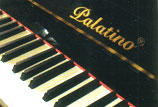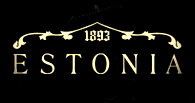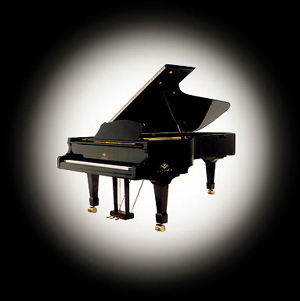|
History of
Estonia
The shores of
the Baltic Sea and the Gulf of Finland have been home to the Estonians
for thousands of years. However, throughout much of their history, they
have been subjugated by foreign occupying powers. Estonians stubbornly
preserved their identity through foreign dominations and finally were
victorious in their War for Independence in 1918-1920, fighting both
Soviet Russia and the German Landeswehr colonizers.
During its
independence 1918-1940, Estonia was a model society in the community of
nations, a member of the League of Nations. Estonia guaranteed cultural
autonomy to all minorities, including its Jewish population.
In 1939, the
Nazi Soviet Pact divided Europe into spheres of influence, 'assigning'
Estonia, Latvia and Lithuania to the Soviets. In 1940, breaking all
agreements Moscow had with Estonia, the Soviet Army occupied Estonia,
forced a pro-Moscow puppet government on the country and illegally
annexed it into the Soviet Union. The United States and most other
Western countries never recognized the annexation.
A reign of
terror ensued, in which Estonia's top political, military and other
leaders were arrested and shot, and thousands deported in cattlecars to
Siberia, where few survived. Nazi Germany occupied Estonia until 1944.
With the return of the Soviets, 80 000 Estonians fled to the West. The
renewed Soviet occupation brought another reign of terror, with more
deportations to Siberia. In a conscious effort to impart Russian
culture in Estonia, the Soviets brought in tens of thousands of
Russians and others to colonize the country. The large Russian ethnic
population currently in Estonia is the consequence of that deliberate
policy of genocide.
Estonia's drive
to regain its freedom began in the mid-eighties with protests against
Moscow's exploitation of Estonia's natural resources and destruction of
its cultural heritage. Huge anti-Moscow demonstrations took place,
culminating in independence after the unsuccessful coup in Moscow in
August 1991.
Since regaining
control over their own country, the Estonians have labored to rebuild
their democratic institutions that were destroyed by Soviet occupation.
A strong, convertible currency, the croon, is the basis for the
country's economic success. The United States stopped giving Estonia
aid in 1996, declaring that Estonia is now able to stand on its own.
Estonia is also a member of a multitude of Western economic, financial,
political and other organizations, including the United Nations.
In 1998, Estonia
began talks with the European Union for eventual membership. The
Estonian government and legislature have begun extensive preparations
to meet EU requirements.
Estonia also
takes part in the Partnership for Peace, the NATO sponsored security
organization for those who may aspire to join NATO in the future. In
its declared quest to rejoin the West, from whom it was once forcibly
torn, Estonia has stated its intent to join the North Atlantic Treaty
Organization.
The Republic of
Estionia, after regaining its freedom and independence for Soviet
occupation in 1991, is rapidly re-building democratic
institutions and a free market economy. Its success has been
crowned by invitation from the European union for accession talks.
Estonia's fledgling Defense Force is helping to preserve peace in
Bosnia and elsewhere. Estonian
Americans are actively providing Estonia scholorships and
technical, economic, political and humanitarian assistance.
|
Map of Estonia
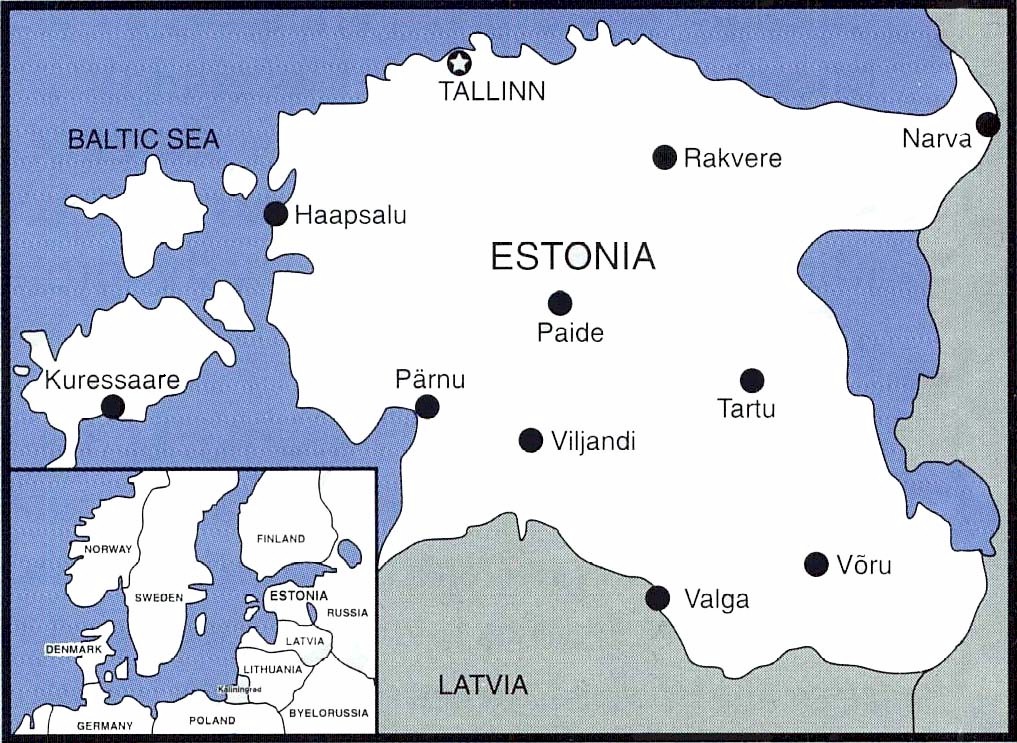
Over two million
tourists visited Estonia in 1997
and the numbers are expected to grow
Geography
Capital:
Tallinn (founded 1154, population one half million)
Other main cities:
Tartu, in the southeast, known for Estonia's most noted university,
founded in 1632. Parnu, on the Gulf of Riga, a famed resort known
throughout Northern Europe
Area:
18,370 sq. miles (equal to New Jersey and
Maryland together)
Population:
1.5 million, about 65% Estonian; 29%
Russian (in 1939, before Soviet occupation the population was 88%
Estonian)
Topography:
Low lying plain, numerous lakes, 40% forests, highest peak 1000 ft
above sea level.
Language:
Estonian, a Finno Ugric language similar to Finnish
Major-Products:
oil shale, phosphorite, chemicals, mineral fertilizers, fishing, wood
products, peat, agricultural products, computers
|
|
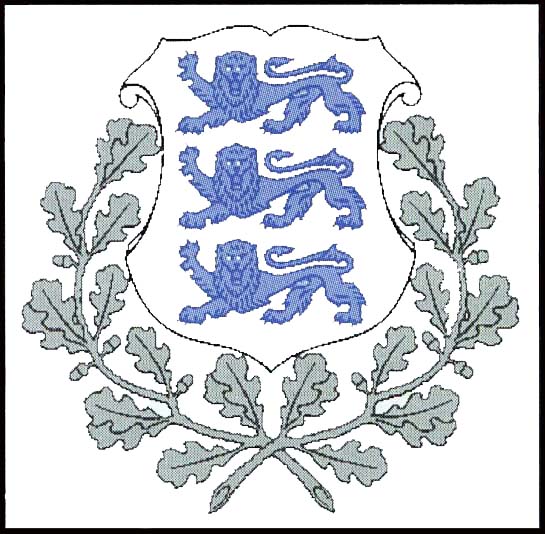
Coat of Arms of the
Republic of Estonia
The Estonian
Americans
Over 26,000
Americans of Estonian descent live in the United States. There are
active Estonian American societies in most major metropolitan areas,
including New York City, 'Washington, Baltimore, Los Angeles, Chicago,
Boston ' San Francisco, Miami, Tampa, Dallas, Cleveland, Buffalo '
Detroit; and in the states of New Jersey, New York, Texas, Oregon,
Minnesota, Connecticut, Washington and others.
The Estonian
American National Council, Inc., founded in 1952, is an umbrella
organization nationally elected by Estonian Americans to represent
their community. It is a non-profit body financed by contributions from
Estonian Americans. It serves to help Estonia and to coordinate and aid
cultural, youth and other activities to keep the Estonian language and
customs alive in America. They include supplementary schools, scouting
units, folk dance and choral groups.
Estonian
Americans are active contributors to the economic, cultural and
political life of the United States.
Estonian
Americans have a deep respect for their adopted homeland. Thousands
have proudly served as officers and enlisted men and women and many
gave their lives in World War 11, Korea and Vietnam for America's cause.
|
|
Back to top
|
|
|
|





